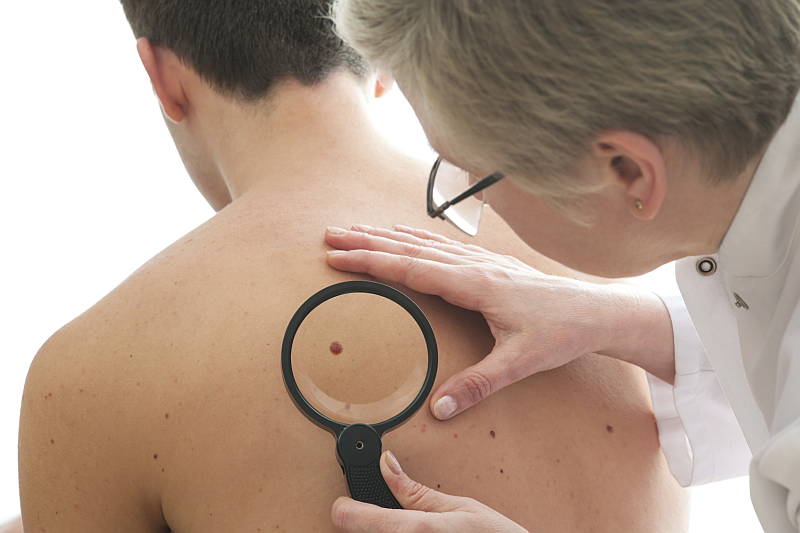A melanoma is a serious skin cancer which is fortunately curable if detected early. A melanoma is made up of abnormal melanocytes (the melanin cells), which are found in the lowest part of the epidermis. These cells create melanin when the skin is exposed to ultraviolet rays. Melanin protects the skin from burning by absorbing the harmful rays in sunlight. An increased number of normal melanocytes is found in common moles. Although a melanoma usually starts as a skin lesion, occasionally it occurs in other parts of the body such as the eye.
Melanoma is most common in people aged 50 to 70 years, although it can occur in adults of any age. Occasionally, it can occur in teenagers, but is extremely rare in children.
Causes
Risk factors for developing melanoma include:
- Solarium use
- Serious sunburn, especially during childhood- melanoma can occur on areas of the body not normally exposed to the sun
- Family history of melanoma
- Fair skin which burns easily
- History of a previous melanoma
- A large number of abnormal moles (called atypical naevi) – these moles are usually larger than 6mm, with an irregular shape and multi-coloured. Atypical naevi are not cancers and a melanoma does not necessarily start in an atypical mole.
- A large number of normal moles, >100
Diagnosis
There are different types of melanoma. The most common type is a superficial spreading melanoma. This starts as a flat, freckle-like spot, which first spreads out sideways on the skin. Other types include nodular, acral, lentigo maligna and amelanotic melanoma.
The first sign of a melanoma is usually a change in a freckle or mole, or a new spot on the skin. A melanoma often looks like an unusual freckle with an irregular edge. It may have a variety of colours including brown, black, blue, white and red. An early melanoma is normally flat but it may later become raised. Other signs are a spot, freckle or mole, which is itchy or tender, or bleeds or has a crust. Melanomas can occur anywhere on the body, not only in areas that get a lot of sun.
If your doctor suspects you have a melanoma, it should be removed and sent to a laboratory for examination under a microscope (histology).
If you have a melanoma, the doctor should examine your whole body to see if any cancer cells have spread to other areas and you have any more melanomas. Other tests are not usually needed.
The thickness of a melanoma is measured in millimetres (from the top to the deepest point it has reached). Survival is very high if a melanoma is less than 0.75 mm thick. A melanoma is also classed by the level of the skin it has reached. The earliest melanoma, known as Level I, is confined to the epidermis. Invasive melanomas are described from Levels II to V, depending on how far they have invaded deeper levels of the skin.
Warning signs of Melanoma
These are- asymmetry, border irregularity, colour variation, diameter >6mm and elevation. Not all such lesions prove to be malignant.
- Change in size: especially if it grows larger rapidly
- Change in colour: especially if it develops multiple shades of tan, brown, black and a mixture of red, white, blue, or the colour spreads from the edge into the surrounding skin
- Change in shape especially if it develops an irregular notched border which used to be regular
- Change in height: especially if it used to be flat
Treatment
Early melanomas are excised surgically. The extent of surgery depends on the thickness of the melanoma and its site. An area of normal skin around the melanoma is also excised to make sure that all the melanoma cells have been removed. For thicker melanomas, a much wider area of skin is cut out. A skin graft might be necessary, which replaces the removed skin with skin taken from another part of the body. The lymph glands in the area may also be removed. If the melanoma is widespread, other forms of treatment may be necessary.
Follow-up
After treatment, regular check-ups are arranged for a period. These checks are important to treat any further problems from the melanoma and to detect any new melanomas early. Regular self skin examination is also advisable.
If you have any questions or concerns about melanoma contact your local doctor, who will arrange for you to see a dermatologist. Contact Us Today!
